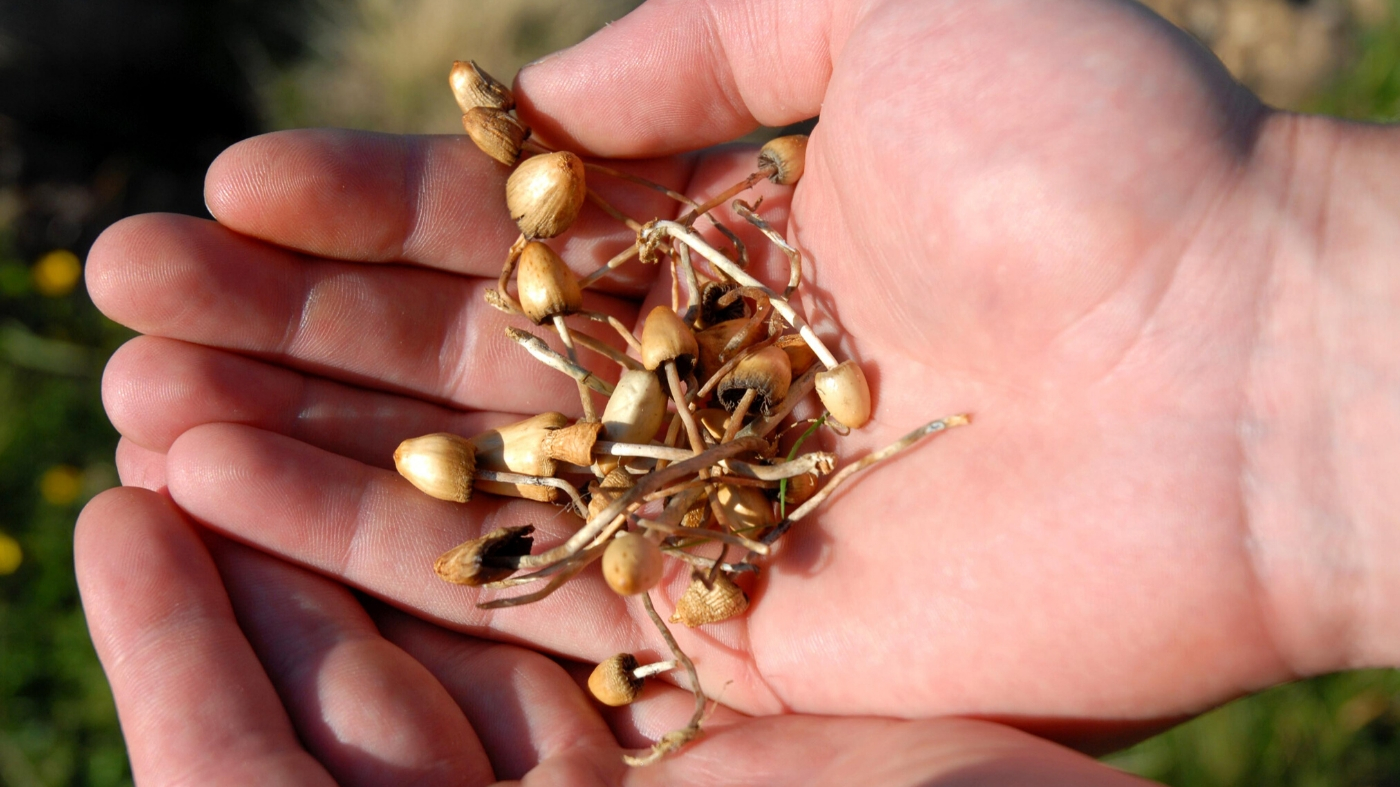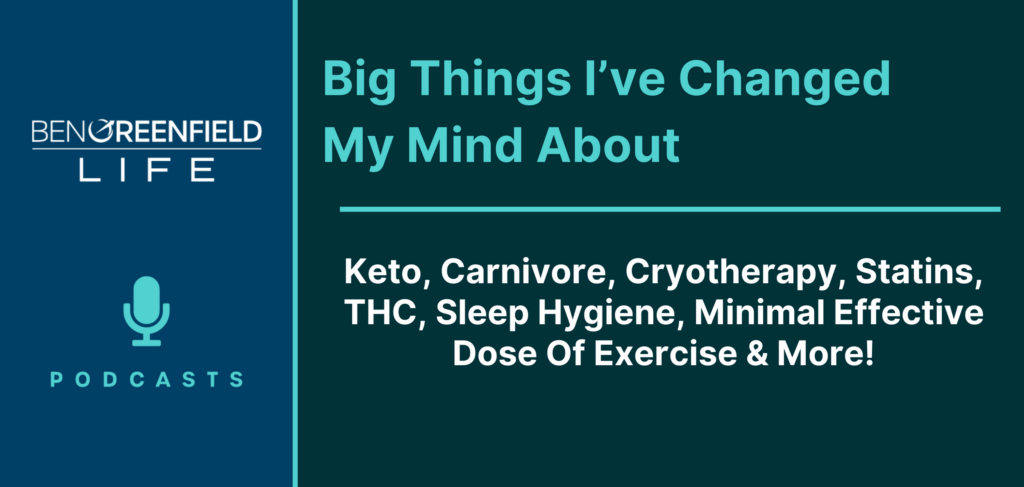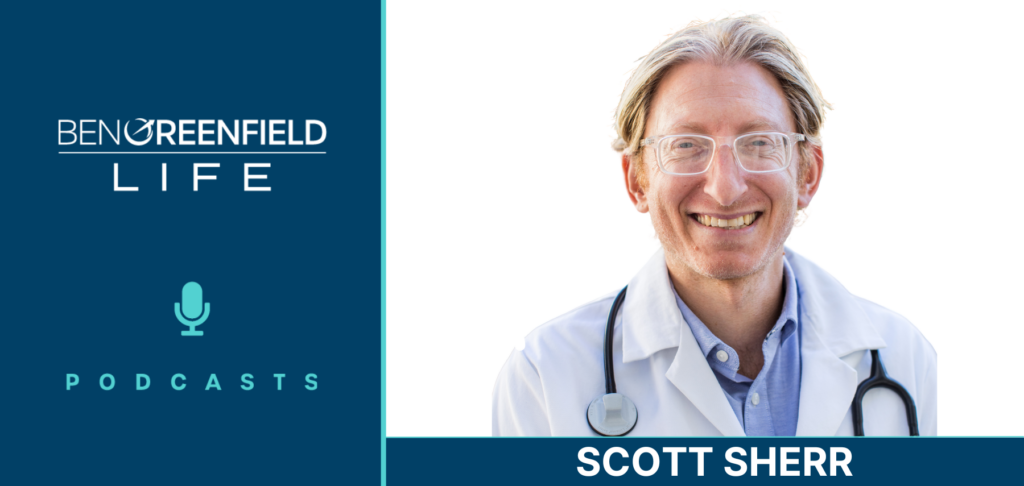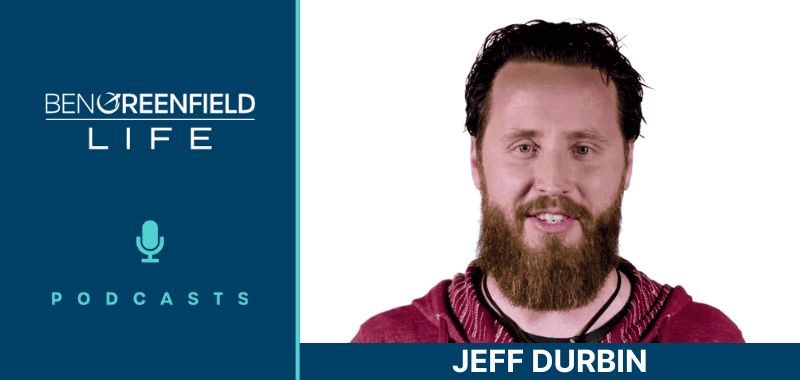June 30, 2020
You may find it shocking to read that I, a Christian, homeschooling family man from the backwoods of Idaho, have been known to partake in both microdoses and “journey” doses of substances such as LSD, psilocybin, ketamine, ibogaine, DMT, MDMA, and beyond—with some strategically timed stints during the year in which I am microdosing with psychedelics for everything from enhancing mood to razor-sharp focus to lulling myself into a deeply relaxing, meditative state during a massage. (I give the full details of my own protocols in my book Boundless.)
In fact, just in the past two weeks, I released two podcasts on the subject of psychedelics…
- “What Happens During A Psychedelic Journey: Dr. Matthew Johnson On Psychedelic Treatment Rooms, The State Of Psychedelic Research & The Future of Psychedelic Therapy.“
- “Microdosing, Biohacking Plant Medicines, Psychedelic-Assisted Psychotherapy, & More – How “Field Trip Health” Works For Ketamine, MDMA, DMT, Psilocybin, & Beyond!“
- How To Do Wim Hof Breathing “The Right Way,” Making Your Own DMT, Inhaling Pure Carbon Dioxide, Cold Showers, MDMA, & Much More – The Keys to Human Resilience.
…and in the past published…
- Immortal Cells, Biohacking Pain, Killing Lyme, Stem Cell Confusion, How Ketamine Works & Much More With Dr. Matt Cook.
- From Green Tea To Psilocybin: The Routines, Diet, Lifestyle, Supplements & Sage Advice From One Of The Top Natural Medicine Docs On The Face Of The Planet – The Dr. Andrew Weil Podcast.
- Secrets Of The Billion Dollar Meal, Peptides For Tanning & Erections, Holotropic Breathwork, MDMA, Ketamine, Addiction Recovery & More With Khalil Rafati
- Mushrooms 101: Everything You Need To Know About The Psilocybin Psychedelics That Are Taking The Health World By Storm.
- Smart Drugs, Nootropics, Microdosing With Psychedelics, Enhancing Deep Sleep, Rites Of Passage & Much More With Kyle Kingsbury Of Onnit.
- Limitless & Lucy – Your Ultimate, Done-For-You Guide To Nootropics, Smart Drugs & Psychedelics.
So, in the spirit of continuing the psychedelic theme from this past couple of weeks, today's article is a guest post by previous podcast guest of mine and a true expert and pioneer in the field of psychedelic research, Dr. Matt Johnson.
You're about to discover how the field of psychedelic research got started in the first place, what led to the decades-long moratorium on said research, where psychedelic research is today (spoiler: it's yielding remarkable results for many who have hit rock bottom and exhausted all other options), whether microdosing has any “real” effects on your body, and finally, what's on the horizon for psychedelic research (plus how you can help out to keep the momentum going).
A Brief History Of Psychedelic Research
Psychedelics were a hot topic in both psychiatry and neuroscience from the 1940s to the 1960s. Even though research had been conducted on mescaline (the major active compound in the peyote cactus and some other cacti) around the turn of the 20th century, it wasn’t until the discovery of the psychoactive effects of LSD in the 1940s that research interest really took off.
The extreme potency of LSD was a major aspect of scientific interest. It also has a clear structural similarity to serotonin, and it was around this time that it was discovered that serotonin is present in the brain and not just the gut. These early threads reinforced the emerging discipline of neuroscience and the understanding of the brain as an electro-chemical messaging machine.
Aside from the theoretical importance of psychedelics in neuroscience, LSD was also of interest as a therapeutic agent to treat psychiatric disorders. Clearly, it had powerful effects on the mind, often resembling the psychotic process that occurs in disorders like schizophrenia. It wasn’t known at the time, but these acute psychotic-like effects were more likely to occur in cases where people were unprepared for the experience and not psychologically supported and reassured by their environment, most importantly by being with people they trust.
The most promising early psychiatric treatment research came from investigators Humphry Osmond and Abram Hoffer in Saskatchewan, Canada in the 1950s. They recognized that alcoholics often saw improvement after “hitting rock bottom” by experiencing delirium tremens (“the shakes”) during alcohol withdrawal. The only problem was that individuals frequently died as a result of delirium tremens; so inducing them was not a workable solution as a treatment.
But they wondered, what if they could give a drug that is relatively safe at the physiological level that also mimics the extreme dysphoria and psychotic-like features of delirium tremens?
LSD seemed to be such a drug. To their surprise, rather than having the highly aversive reactions they were expecting, people often had highly positive, transcendental, and insightful experiences. Researchers soon recognized that such positive experiences were more likely when they psychologically prepared folks for the drug experience, provided personal support during sessions, had folks wear eyeshades to direct their attention inward, and played evocative music to support the experience.
Thus, the “psychedelics therapy” method was born. It is this method that is at play in virtually all modern research examining the potential therapeutic effects of high dose psychedelics. In this early era of research, promising findings were reported for a number of disorders, chief among them being alcoholism and distress among terminal cancer patients.
For more information on this early history, check out Psychedelic Drugs Reconsidered and Psychedelic Psychiatry: LSD from Clinic to Campus.
So What Happened?
The dark ages of psychedelic research happened after LSD became popular as a recreational drug and highly associated with the counterculture of the late 1960s and early 1970s. There were some real casualties, especially considering that the average LSD doses being used in those days were several times larger than those typical in the illicit market these days.
Most researchers were aware of the risks, were careful to warn folks about them, and were essentially begging the very small number of provocative researchers encouraging wider use to take a less reckless stance. All of these factors combined to result in a functional dormancy of human research with psychedelics that lasted about 25 years.
Research was still technically allowed under strict conditions, even after these drugs were made illegal, but the consensus emerged that these drugs were so dangerous that even scientists and doctors could not be trusted to study them in humans. Starting in the mid- to late-1990s, a small number of researchers around the world, such as Franz Vollenweider, started administering classic psychedelics once again to humans.
Classic psychedelics are those—like LSD, psilocybin, mescaline, and DMT—with primary psychoactive effects mediated by a certain type of serotonin receptor, 5-HT2A. Most modern work with classic psychedelics has been done with psilocybin, which has a duration that fits a little more easily into the workday than LSD. Moreover, because LSD was the primary compound being used recreationally in the late 1960s, it was LSD, in particular, that was most frightening to many.
Why did it take so long for psychedelic research to finally get taken seriously again in science?
There are many potential explanations, but I think the biggest factor is that enough time had to pass. Society was essentially traumatized and developed a phobic reaction to any suggestion that psychedelics could have legitimate benefit, even in the most constrained circumstances. As I’ve written previously, paradigm-shifting advances in science are often stalled for decades before they take hold in the scientific or medical mainstream, including biggies like Newton’s laws of motion, or Darwin’s theory of natural selection.
Modern Psychedelic Research
Since the 1990s, modern human research using psychedelics has examined a number of issues, including the brain mechanisms of classic psychedelics, their effects on a variety of aspects of cognition, the subjective experiences that unfold under optimized conditions, and the treatment of several psychiatric disorders.
The most advanced therapeutic findings are with cancer-related distress—meaning depression and anxiety symptoms in folks dealing with life-threatening cancer.
Three randomized, double-blind studies have all shown persisting significant reductions in these symptoms. The two studies that used the largest doses, one of which I conducted with my colleagues at Johns Hopkins, found immediate and substantial decreases in depression and anxiety that persisted for at least 6 months. In fact, in our study of 51 cancer patients, 80% of patients showed substantial decreases in depression and anxiety 6 months after the treatment. This was caused by only a single high dose session with psilocybin. Although at an earlier stage of development, several other psychiatric disorders also show promise for improvement by psychedelic therapy. Early non-randomized research with non-cancer patients with major depressive disorder also shows substantial improvements in depression.
I initiated my work using psilocybin to treat tobacco addiction over a decade ago. I was especially interested in addiction because it is likely the best test of behavior change. Our pilot work showed that a course of three psilocybin sessions—along with preparatory and follow up sessions that used standard cognitive-behavioral therapy—was followed by a substantial biologically-verified (by urine and breath tests) abstinence from smoking: 80% smoke-free at 6 months, and 60% smoke-free at an average of 2.5 years. These are much higher numbers than typical, with the best medication in the field typically resulting in 30-40% abstinence at 6 months.
In our current follow up study, folks are randomized to either a single psilocybin session or a course of nicotine patches (following standard FDA package label instructions), both with the same cognitive-behavioral therapy. Although results could change as the study continues, at present (for the 44 people who have reached their 12-month follow-up), 59% are biologically-confirmed as smoke-free with psilocybin, compared to 27% with nicotine patch. These results do not appear to be unique to smoking, as promising pilot study results were also reported by Michael Bogenschutz for psilocybin in the treatment of alcoholism.
In conference presentations, Peter Hendricks has reported very early promising findings for the treatment of cocaine addiction. So far, we are finding large effects across these various disorders. These are disorders that are associated with a substantial risk of death and are substantially underserved by current treatment options. We need to continue this research, as results may or may not hold up as the larger and more rigorous studies continue, but the early results demand substantial investment and interest.
For a review of these various clinical findings, see this recent review paper.
Is Microdosing Effective?
In regard to psychedelics, the concept of microdosing means taking a dose of a psychedelic so small that it does not have overt psychedelic effects—but does have very subtle if any, discernible psychoactive effects. For example, a microdose of LSD would be somewhere in the realm of 10 micrograms; many folks would say 100 micrograms is the minimal amount to get into psychedelic territory.
Beneficial claims are wide-ranging—from anti-depressant effects, to cognitive benefits, to athletic performance. In my opinion, there is both a good amount of placebo effect that explains these anecdotal reports, mixed with some underlying real pharmacological effects.
There are only a few papers published in the clinical literature that have examined microdosing under conditions that can control for the placebo effect, and none of these reports found benefits. Some studies have relied on surveys. While these results are valuable for documenting user claims, they are not convincing of efficacy. There is also some research that administered the drug to people but didn’t blind the administration. Rather, they tested people on cognitive measures before and after taking a small dose of psilocybin and found a small benefit after taking the psilocybin. A concern is that such studies—where the benefit is in the form of millisecond-level differences in reaction time—are especially ripe for placebo effects to take hold. There is also concern about order or practice effects. Results of the little double-blind research that has been conducted range from no change, to negative effects (impaired ability to accurately judge time), to increases in abuse-liability related subjective effects. In other words, folks felt just a little “high.”
To be clear, these studies have only assessed the direct effects of microdoses after administering the drug and have not been conducted in the context of an ongoing pattern of taking the drug once every few days as is espoused by microdosing aficionados. Those folks claim benefits that last beyond the day during which the microdose is taken. So it could be that studies just haven’t been conducted in a way that is best suited to find a beneficial effect. One study was conducted with a once-every-few-days model and reported that there were no problems due to microdosing, but they also did not report any benefit over the 21 days of microdosing.
Perhaps the explanation is that there is simply a lot of hype to some of the claimed benefits, and the expectation of having “one of those days” where you feel in the flow, positive, and confident is enough to make some magic happen. We are constantly in flux with the world. Smile a little more to people, and some of them will smile back at you. Just putting forth some effort to get a task accomplished often results in some initial pride in taking a first step, reinforcing additional persistence. Given the dramatic interest and mystery surrounding psychedelics, I think they can powerfully harness placebo expectations.
But my best guess is also that there is something real going on here (that is, a pharmacologically direct effect; to be clear, the placebo effect is quite real and worthy of substantial research).
I think the most promising area for microdosing is for antidepressant effects. These are among the most compelling anecdotes. Also, it is mechanistically extremely plausible that there is some effect there. Traditional antidepressant effects going back to the 1950s have involved augmenting the serotonin system in one way or another. So, it would not be all that surprising if tinkering with the 5-HT2A serotonin receptor in a chronic fashion could lead to antidepressant effects. I think the safety and efficacy of this should be rigorously investigated.
The claimed cognitive benefits also deserve further research. However, one of my key questions here is: If these effects are real, how special are they? There are plenty of cognitive enhancers that can provide benefit in one mental domain or another with the right context, dose, and frequency: amphetamine, modafinil, caffeine, and nicotine, to name just a few well-known ones (check out Ben's article “Limitless & Lucy – Your Ultimate, Done-For-You Guide To Nootropics, Smart Drugs & Psychedelics.” for more on caffeine and nicotine as cognitive enhancers).
One might say… Yes, but you build up a tolerance to the effects of these other drugs, and even if you become tolerant to the effects of microdosing psychedelics, that tolerance is likely minimized by the pattern of taking them only once every few days. However, a similar pattern will minimize tolerance and help to maintain any beneficial effects of these other compounds as well. Maybe microdosing psychedelics does provide something unique and compelling in terms of cognitive enhancement above and beyond what is seen with these other compounds, or maybe microdosing is in the same league as the known cognitive enhancers, which doesn’t make it very special.
One final thing about microdosing: All of the major classical psychedelics, including LSD and psilocybin, have effects at the 5-HT2B receptor in addition to their effects at the 5-HT2A receptor. Even the non-classic psychedelic MDMA has 5-HT2B effects. Drugs that interact with 5-HT2B are well known to lead to valvular heart disease with chronic use. This is why fenfluramine, part of the combination medication “fen-phen,” was pulled from the market. It is not likely that current treatment models with high dose psychedelics (which only involve one or a few administrations) are a concern in this regard, but taking these agents chronically every few days for months or years may very well be a concern for heart valve disease.
Safety First
I don’t encourage any psychedelic use, but I feel it is important to inform you about what we know regarding the various risks of psychedelics, including the factors associated with more risky versus less risky use.
Some of my earliest work with psychedelics was on the risks they presented and what we can do to minimize those risks to an acceptable level for clinical work. This theme has remained.
I recently wrote an analysis with colleagues regarding the risks of psilocybin, applying the factors used by the FDA to determine the scheduling of a medication. This review concluded, based on over a half-century of data, that if psilocybin is eventually approved as a medicine, it should likely be placed in Schedule IV. It is currently in Schedule I, a more restrictive category than even cocaine and methamphetamine, two drugs that I’ve also conducted human research with. Even though many sleeping drugs are in Schedule IV, there would likely be additional restrictions imposed by the FDA, such as the requirement only to administer psilocybin in the clinic with safety mechanisms in place like those in our research.
I’ll briefly mention the most relevant risks of psilocybin and other classic psychedelics here. First, folks with psychotic disorders such as schizophrenia (or an identifiable predisposition to these disorders) should not take these drugs as they might trigger or worsen the psychotic process. At a sufficiently high dose, these drugs can cause overwhelming psychological effects that can sometimes lead to strong anxiety, fear, and panic—the “bad trip.” This is true for everybody, including psychologically healthy people. In clinical work, I characterize these as “challenging experiences,” as they are not dangerous when experienced in a safe and appropriately supervised environment, even though they can be temporarily aversive. Moreover, they are often valued as learning experiences after the fact, and people can sometimes deal with important but difficult psychological material during these challenging experiences.
In an unsupervised environment, however, sometimes folks are harmed or even die when they panic or make a poor decision during such experiences. Admittedly, this is relatively rare, and most people who use psychedelics recreationally do not experience these consequences. With that said, most people are also fine in any single instance of driving without a seat belt, but over enough time and across enough people, the risks are readily observed.
Another risk is that these drugs raise pulse and blood pressure, so they can be a risk for those with more severe cardiac disease. Folks in this category are at risk when doing any number of things with a moderate cardiovascular load, such as intense exercise, climbing stairs, shoveling show, or having sex. I have also published research showing that headaches are more likely for about a day after using psilocybin, although they are typically mild to moderate in severity and nothing that should preclude clinical use.
A rare side effect that can present is persistent perceptual problems, as in the psychiatric diagnosis of hallucinogen persisting perceptual disorder. Importantly, this seems exclusively related to the recreational use of psychedelics and has never been seen in thousands of clinical research participants. This means it could be due to a very rare susceptibility or the result of any number of factors, one being polydrug use (e.g., getting drunk or using other drugs while also using the psychedelic).
Finally, I think it's important to mention addiction, specifically that classic psychedelics do not appear to lead to addiction according to the available evidence. By “addiction” I mean compulsive drug-seeking. Nobody is jonesing for their next mushroom or LSD fix. Now, psychedelics can certainly be abused, meaning they could be used in a way that leads to harm for the user or other people—for example, driving while on a psychedelic, or using in a pattern that interferes with family relationships or one’s occupation.
Summary
The use of psychedelics for the treatment of depression, PTSD, addiction, and beyond is certainly exciting and lends hope to those suffering from these ailments. The next several years are likely to result in substantial advances in these areas, including the approval of psychedelic medicines for certain disorders and their clinical dissemination.
I'm already seeing substantial interest among investors regarding the potential to develop psychedelics as FDA-approved medicines.
Academic research will continue to grow, and it is likely that the decades-long absence of any NIH funding for therapeutic research with classic psychedelics will come to an end.
We’ll likely also see some folks either using these compounds or developing them, in unwise or dangerous ways. We need to make sure clinicians handle these compounds with wisdom and care, and don’t let the magnitude of the psychedelic experience for the patients go to their heads. It’s hard to be associated with a treatment that some patients will consider the most important or meaningful event in their life. It requires responsibility, humility, and strong professional boundaries on the part of clinicians. The same can be said for organizations developing psychedelics as medicine, and for the healthcare systems that will regulate them. But these are problems we must navigate and do our best to address. Any substantial advancement comes with substantial challenges. I’m excited to do my part to help safely shepherd these powerful tools into safe and effective therapeutic use so long as the data indicate they can help people.
As Ben mentioned in the intro to his podcast episode with me, the MAPS (Multidisciplinary Association of Psychedelic Studies) Capstone Challenge is aiming to provide the funds—$30 million total—needed to complete the studies required for FDA approval of MDMA-assisted psychotherapy for PTSD
Tens of millions of people worldwide suffer from post-traumatic stress disorder (PTSD). Millions more have suffered from emotional and physical abuse but never get diagnosed. On top of that, PTSD is notoriously difficult to treat and cure. Never before has the treatment of trauma been more relevant. In good news, it appears that one odd candidate—MDMA-assisted psychotherapy—can produce results that practically defy belief. As one actual patient put it in the Trip of Compassion documentary, “I felt like I went through 15 years of psychological therapy in one night.”
In MAPS’ completed phase 2 trials with 107 participants, 56% no longer qualified for PTSD after treatment with MDMA-assisted psychotherapy, measured two months following treatment. At the 12-month follow-up, 68% no longer had PTSD. Most subjects received just 2–3 sessions of MDMA-assisted psychotherapy. All participants had chronic, treatment-resistant PTSD and had suffered from PTSD for an average of 17.8 years. On August 16, 2017, the FDA granted Breakthrough Therapy Designation to MDMA for the treatment of PTSD.
There is a clear path ahead to make MDMA a legal medicine for millions of people suffering from PTSD. And just as important: If we succeed on this path, MDMA will also set precedent and open the door for dozens of other therapeutic compounds, including psilocybin.
This challenge pledge is all or nothing. If MAPS fails to raise $10 million by September 10th, they do not receive the $10 million challenge pledge. There is no partial credit, and there is a real urgency. This $10M challenge pledge was announced in Tim Ferris' recent interview with Rick Doblin, the founder of MAPS. Every dollar matters, so if the spirit moves you, please consider giving what you can by clicking here. If you can contribute $100,000 or more over two years, please get in touch with Rick and his team by emailing [email protected].
Please leave your thoughts, questions, and comments below, and I'll be happy to respond!














Ben in the recent video on fb you talk about your rutine before and after trip i.e. vitamin C and 5HTP etc. Can you please list those compounds and tell more to their importance. Thanks.
Best Psychedelics orientated article.
Clearly, the issue with psychedelics is that they work too effectively. The drugs they could replace have tens of billions of dollars of market value. The dramatic upswing in pharma stock values in the last decades has been impressive. The straw man safety debate over non-pharmaceuticals should be obvious, especially in light of the current oxycodone addiction debacle.
Love your work!